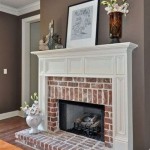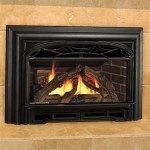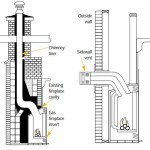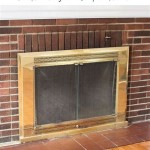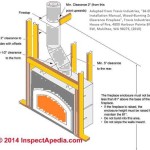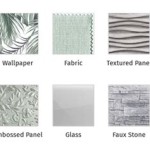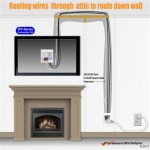Brick Fireplace Refacing Kits: A Comprehensive Guide
Brick fireplaces, a classic architectural feature in many homes, often become dated or worn over time. Refacing a brick fireplace offers a viable solution to update its appearance without the extensive demolition and reconstruction required for a complete fireplace replacement. Brick fireplace refacing kits provide homeowners with a convenient and often cost-effective way to achieve this transformation. This article delves into the various aspects of brick fireplace refacing kits, exploring their types, benefits, installation considerations, and factors influencing cost.
Understanding Brick Fireplace Refacing Kit Options
Brick fireplace refacing kits are essentially systems designed to cover the existing brick surface with a new, more aesthetically pleasing material. These kits come in a range of styles, materials, and installation complexities. The selection of a particular kit hinges on factors such as the desired aesthetic, the homeowner's budget, and their comfort level with DIY projects.
Stone Veneer Kits:
These kits are the most popular and often considered the most visually appealing. Stone veneer is a thin layer of real or manufactured stone that adheres to the existing brick. Real stone veneer offers an authentic look and feel but is generally heavier and more expensive than manufactured stone veneer. Manufactured stone veneer replicates the appearance of natural stone and is lightweight, making it easier to install. Both options come in a diverse array of colors, textures, and stone types, allowing homeowners to achieve a variety of styles, from rustic to contemporary.Tile Kits:
Tile refacing kits provide a more modern and customizable aesthetic. Tile offers a clean, sleek look and is available in a wide variety of materials, including ceramic, porcelain, glass, and natural stone. Different tile sizes, shapes, and patterns can be used to create unique designs. Tile installation generally requires more precision than stone veneer, as proper spacing and alignment are crucial for a professional-looking finish. Grouting, the process of filling the gaps between tiles, is also an important step that contributes to the overall appearance and durability of the tiled surface.Wood Paneling Kits:
Wood paneling kits offer a warmer, more traditional look for fireplace refacing. Wood panels can be made from solid wood, plywood, or MDF (medium-density fiberboard) and can be painted, stained, or left natural. Wood paneling is relatively easy to install, making it a good option for DIY projects. However, it's important to consider the fire resistance of the chosen wood material. While the fireplace opening is generally protected, ensure adequate clearance and use fire-retardant coatings where appropriate.Brick Veneer Kits:
For those who desire to retain the brick look but want a different color or texture, brick veneer kits are an option. These kits consist of thin brick slices that are adhered to the existing brick surface. Brick veneer is typically made from real brick and offers the same durability and fire resistance as standard brick. Installation is similar to stone veneer, requiring mortar and careful alignment of the individual brick pieces.Each of these kit types typically includes the facing material (stone, tile, wood, or brick), adhesive or mortar, spacers (if applicable), and detailed instructions. Some kits may also include tools, such as trowels, levels, and measuring tapes.
Benefits of Using Brick Fireplace Refacing Kits
Choosing a brick fireplace refacing kit offers several advantages over a complete fireplace remodel. These benefits contribute to the practicality and appeal of this renovation option.
Cost-Effectiveness:
Refacing a fireplace is generally less expensive than demolishing the existing fireplace and building a new one. Refacing kits eliminate the need for extensive demolition, structural modifications, and professional masonry work, which can significantly reduce overall project costs.Simplified Installation:
Many refacing kits are designed for relatively easy installation, making them suitable for DIY projects. Clear instructions and pre-cut materials simplify the process, allowing homeowners to save on labor costs. However, it is crucial to assess one's own skillset and comfort level before undertaking a DIY refacing project. If unsure, it is advisable to hire a professional contractor.Minimal Disruption:
Refacing involves less disruption to the home compared to a full fireplace remodel. There is no need to remove the existing fireplace structure, reducing dust, noise, and the overall mess associated with major renovations. The project can typically be completed in a shorter timeframe, minimizing inconvenience to the homeowner and their family.Aesthetic Enhancement:
Refacing kits provide homeowners with a wide range of design options to update the look of their fireplace and complement their home décor. Refacing can transform a dated brick fireplace into a stylish focal point, enhancing the overall aesthetic appeal of the room.Increased Home Value:
A well-refaced fireplace can increase the value of a home. It demonstrates that the home is well-maintained and updated, which can be a significant selling point for potential buyers. A modern and attractive fireplace adds to the overall appeal and perceived value of the property.Covering Existing Damage:
Refacing can effectively cover up any existing damage to the brick fireplace, such as cracks, stains, or chipped bricks. Instead of repairing individual bricks, refacing provides a uniform and attractive surface, concealing any imperfections.Installation Considerations and Best Practices
Successful installation of a brick fireplace refacing kit requires careful planning, preparation, and attention to detail. Following these considerations and best practices will help ensure a professional-looking and long-lasting result.
Surface Preparation:
The existing brick surface must be thoroughly cleaned and prepared before applying any adhesive or mortar. Remove any loose debris, dirt, dust, and grease. A wire brush and a cleaning solution can be used to scrub the brick surface. If there are existing cracks or holes in the brick, fill them with a patching compound and allow it to dry completely before proceeding. Ensuring a clean and solid surface is crucial for proper adhesion.Measuring and Planning:
Accurately measure the dimensions of the fireplace to determine the amount of material needed. Plan the layout of the refacing material (stone, tile, wood, or brick) to ensure a balanced and aesthetically pleasing appearance. Consider the placement of individual pieces, paying attention to grout lines, patterns, and symmetry.Adhesive or Mortar Selection:
Choose an adhesive or mortar specifically designed for adhering the chosen refacing material to brick. Follow the manufacturer's instructions regarding mixing ratios, application techniques, and curing times. Use a notched trowel to apply the adhesive or mortar evenly to the back of the refacing material and the brick surface.Applying the Refacing Material:
Carefully align and press the refacing material onto the prepared brick surface. Use spacers, if applicable, to ensure consistent grout lines. For stone and brick veneer, use a level to ensure that the pieces are aligned vertically and horizontally. Gently tap the refacing material with a rubber mallet to ensure proper adhesion.Grouting (for Tile and Stone):
After the adhesive or mortar has cured, apply grout to fill the gaps between the tiles or stones. Choose a grout color that complements the refacing material. Use a grout float to press the grout into the gaps and remove excess grout. Wipe the surface with a damp sponge to clean off any remaining grout residue. Allow the grout to dry completely before sealing it.Sealing (Recommended for Some Materials):
Sealing the refaced fireplace can protect it from staining, moisture damage, and wear and tear. Use a sealant specifically designed for the chosen refacing material. Apply the sealant according to the manufacturer's instructions. Sealing is particularly recommended for porous materials, such as natural stone and some types of tile.Safety Precautions:
When working with tools and materials, always wear appropriate safety gear, such as gloves, eye protection, and a dust mask. Work in a well-ventilated area. Follow all safety instructions provided by the manufacturers of the materials and tools being used.Following these guidelines will contribute to a successful and visually appealing brick fireplace refacing project.
Factors Influencing the Cost of Brick Fireplace Refacing Kits
The cost of a brick fireplace refacing project can vary considerably depending on several factors. Understanding these factors can help homeowners budget appropriately and make informed decisions.
Type of Refacing Material:
The material chosen for refacing has the most significant impact on cost. Real stone veneer is generally the most expensive option, followed by manufactured stone veneer, tile, brick veneer, and wood paneling. The specific type of stone or tile also affects the price, with rarer or more exotic materials being more expensive.Size and Complexity of the Fireplace:
Larger fireplaces require more refacing material and labor, increasing the overall cost. Complex fireplace designs with intricate details or curves may also require more time and effort to reface, further increasing the price.DIY vs. Professional Installation:
DIY installation can save on labor costs, but it requires time, skill, and the right tools. Professional installation ensures a high-quality finish and can save time and effort, but it adds to the overall project cost. The decision to hire a professional depends on the homeowner's skillset, comfort level, and the complexity of the project.Preparation Work:
If the existing brick surface requires extensive preparation, such as repairing cracks or removing old paint, this can add to the overall cost. Significant preparation work may require hiring a professional contractor.Location:
Labor costs and material prices can vary depending on the geographic location. Areas with higher living costs generally have higher labor rates and material prices.Kit Quality:
The quality of the refacing kit can also affect the price. Higher-quality kits typically include better materials, more detailed instructions, and a longer lifespan, but they also cost more. It's important to balance cost with quality to ensure a long-lasting and aesthetically pleasing result.By considering these factors, homeowners can estimate the cost of their brick fireplace refacing project and make informed decisions about which materials and installation methods to choose.

Reface A Fireplace With The Look Of Stone Or Brick Barron Designs

Brick Transformations Whitewashed Kit Giani Inc

16 Red Brick Fireplace Makeover Ideas

Brick Transformations Whitewashed Kit Giani Inc

Brick Anew Fireplace Painting The Stunning Natural Look

Home Safe Doors And Reface Kits Wichita Ks Hearth

A Step By Guide To Fireplace Refacing Diy Family Handyman

15 Fabulous Fireplace Refacing Ideas Average But Inspired

Reface A Fireplace With The Look Of Stone Or Brick Barron Designs

16 Red Brick Fireplace Makeover Ideas
Related Posts

